What to do on a weekend in St. Petersburg? Ideas for day-long family daytrips: the fortresses of the Leningrad Region, Russia
What to do on a weekend in St. Petersburg? Our review of the possible daytrip options - the historic fortification structures of the Leningrad Region: the Shlisselburg, the Koporye , the Ivangorod , the Staraya Ladoga fortresses and the Vyborg Castle.
- Nut Fortress (Shlisselburg Fortress)
- Koporye Fortress
- Ivangorod Fortress
- Staraya Ladoga Fortress
- Vyborg Castle
The fortress you do decide to explore might depend firstly on the available means of transportation. By public transport it’s easiest to get to Nut Fortress in Shlisselburg or Vyborg Castle. If you’ve got your own transportation, the quickest fortress to get to is in Koporye. Then there are several other fortresses situated throughout Staraya Ladoga and Ivangorod.
There are historic festivities held in practically all of the fortresses as well as restoration games where you can see a reenactment of a jousting duel, battles pitting one army against another, and various middle age performances, including on water. The schedule for these events can be viewed on the official sites of the museums or on the KidsReview.ru Guide.
Nut Fortress (Shlisselburg Fortress)

Time: 14th Century
Location: 64 km east of Saint Petersburg. The fortress is located on Nut Island on the source of the Neva River across from the city of Shlisselburg.
Some interesting facts on the fortress:
This fortress is mighty and inspiring. It takes up the entire expansive territory of Nut Island. The walls surrounding it extend for almost a kilometer, meanwhile maintaining a width of 4.5 meters! At one time there used to be six round towers along the perimeter of the fortress walls, one triangular, and inside it another fortification had been erected – a stronghold with three towers for the storage of rations and ammunition. Still surviving to this day are five towers along the perimeter of the fortress walls and a stronghold tower. There are few true constructions remaining from the 14th century. Most of what we can see now are reconstructions of the fortress made during the end of the 15th century to the beginning of the 16th century.
Nut Fortress today:

Of course, the fortress has not been preserved in perfect condition from when it was built until today. The most significant destruction of it took place in the 20th century, specifically in the beginning of World War II. The fortress had not yet played its last role in protecting The Road of Life. There is a memorial complex there dedicated to the military events located inside the fortress, which has journeyed so far from its medieval look that it is now unrecognizable.
Some towers are closed off by construction timbers, but you can get into the majority of them. Also open to visitors are the inner passages of two of the towers. The Secret Building has been preserved and currently located inside it is an interesting museum exposition about the prisoners of the fortress. On top of that, you can visit an exhibition located in the New Prison building.
Nut Fortress Dates and Hours of Operation:
The fortress is open to visitors between May 1st and October 31st from 10 a.m. until 5 p.m. every day of the week.
Nut Fortress Price of Admission:
Admission is 160 rubles for adults, 70 rubles for schoolchildren, and free of charge for children 7 and under.
How to get there:
You can get there from Dybenko Street subway station on the Shlisselburg bus (#575) or by car on Highway M18. You can get to the island by boat. You’ll have no problem crossing. The largest quantity of boaters at the wharf looking to earn some extra cash will be found there during the hours of operation of the fortress. It costs 75 rubles for a ride (as of summer 2012) per person one way (both for children and adults).

Bonuses:
Located right outside the fortress walls and the Neva bay is quite a spacious strip of land where you can set up a picnic on the shore.
After coming to Shlisselburg, you can also stop by the Diorama Museum if you like located nearby.
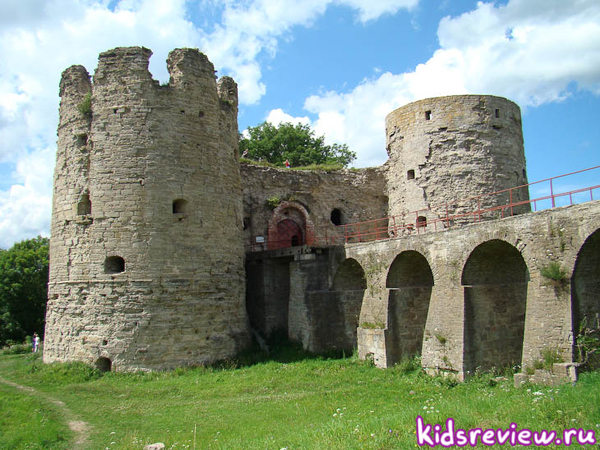
Time: 13th Century
Location: the fortress is located in Koporye village in the Lomonosov District of the Leningrad Region 100 km from Saint Petersburg.
Some interesting facts on the fortress:
The foundation for Koporye Fortress was laid in 1237. It is located on a picturesque hill on the shore of the shallowed river of Koporka, which gave the fortress its name. Around the fortress is a drained moat and a colorful bridge, which used to be drawn up and down.
The fortress was originally wooden. It was constructed by the German knights of the Livonian Order. Aleksander Nevsky took the fortress from the Germans and destroyed it to build his own in its place, but out of stone. The idea was brought to fruition on in the end of the 13th century by Aleksander’s son Prince Dmitry. He built a new fortress out of nearby lime rock and in was rebuilt on several occasions in the 15th and the 16th centuries.
The fortress was won over by the Swedes several times and they were cast out of Koporye for good in 1703.
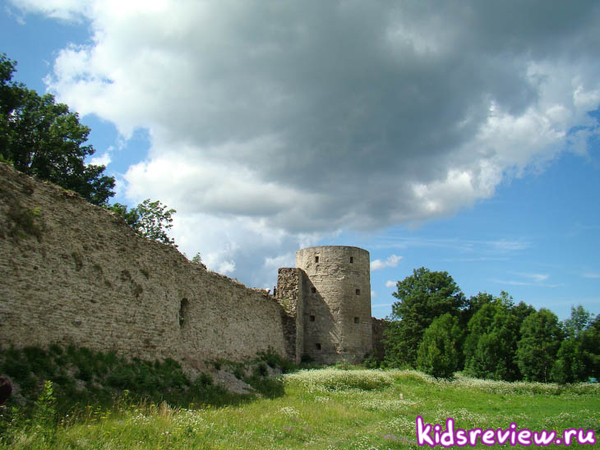
Koporye Fortress today:
The small fortress at Koporye is partially destroyed. The fortress walls have been preserved with a width of around two meters and the corner towers stand 20 meters tall. Located in the center of the fortress is a small half-destroyed Transfiguration Church from the 16th century. Beneath the North and South Towers of Koporye Fortress are underground passages, which previously led to torture chambers. Many paths are barricaded by rocks, but you can however take a flashlight and some old clothes and visit some ancient underground dungeons. The workers at the fortress remind tourists over and over that letting children run off to explore alone underground is not safe.
Out of four towers, three of them are open to visitors. The corner tower of the fortress is hardly preserved and passage into it is prohibited, despite that the underground walkways located beneath, just like anything else prohibited drives tourists crazy.
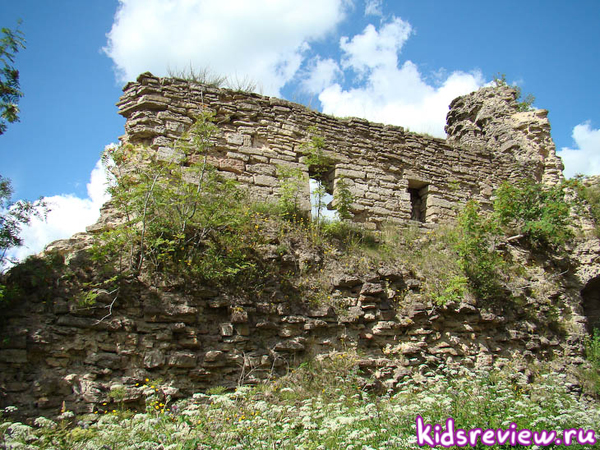
Koporye Fortress Hours of Operation:
The fortress is open to visitors from 10 a.m. to 6 p.m. It works on restricted hours on Mondays and Tuesdays from 10 a.m. to 5 p.m.
Price of Admission:
Admission is 50 rubles for adults and 20 rubles for children (as of summer 2012)
How to get to Koporye Fortress:
Assuming you do not have a special pass for a ride through the Pine Forest, you’ll have to take Highway M11 to Narva and exit right at Beguntsy to H15. You’ll arrive at the fortress and the parking lot about a kilometer after entering Koporye village.
Bonuses:
When entering Koporye, you’ll be able to stop by the local market and by some mushroom berries, local eggs, and seasonal fruits and vegetables. Meanwhile, on the way to Koporye, you can see stork nests often found on the territory of some one’s country estate. The local residents are normally hospitable to tourists with children and even let them into their yard to take pictures.
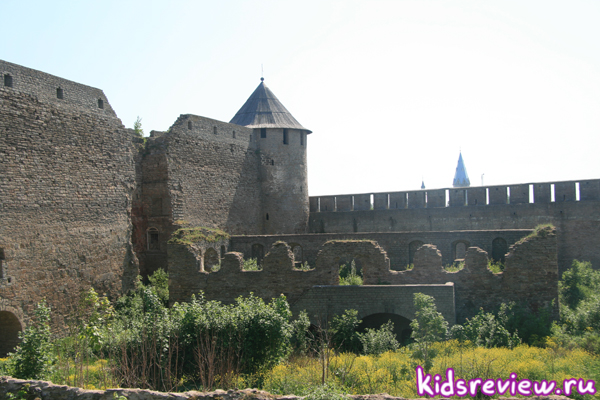
Time: 15th Century
Location: located in the city of Ivangorod in the Leningrad Region 146 km from Saint Petersburg.
Some interesting facts on the fortress:
The fortress was built during the reign of Ivan III (hence the name) in order to protect the residents of Novgorod residents from its western neighbors. The edifice ended up absolutely huge: three-meter wide jagged walls standing 15 meters tall and round towers separated by concamerations with battle stages and mighty bastilles. Along the perimeter of the fortress walls are 11 towers peering from above and there are several constructions in the inner territory as well: Uspensky Cathedral and Nikolskaya Church, two large storehouses, a hideout, a radiator, an armory, and much more.
Ivangorod Fortress was originally wooden. It was built in stone only somewhat later. Its cliff foundation makes it especially durable, which is the reason why it is able to stand so tall.
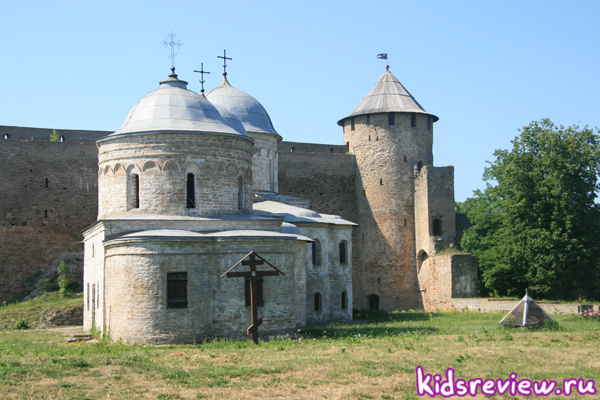
Ivangorod Fortress today:
One feature of Ivangorod Fortress worth noting is its abundance of walls and towers, which you can freely explore. There are secret passages there as well, but you cannot walk through them as they are barricaded by rocks.
The medieval edifice endured a lot during World War II. Concentration camps were held there at that time for war captives and by the time the Germans left Ivangorod in 1944, they had blown the fortress up and damaged six towers, a hideout, large sections of the walls, as well as internal constructions.
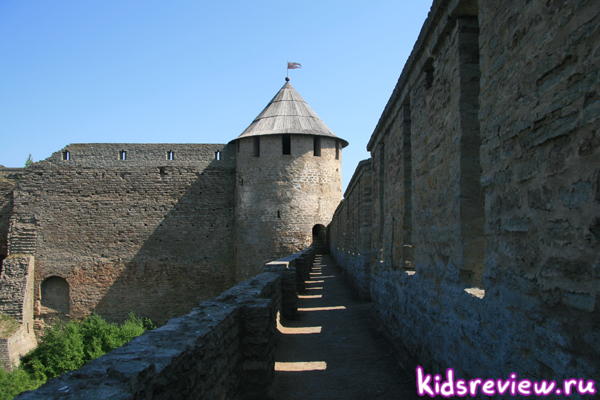
Ivangorod Fortress Hours of Operation:
The fortress is open to visitors from 10 a.m. to 6 p.m. and closed on Mondays.
Cost of admission:
Admission is 100 rubles (as of summer 2011)
How to get there:
You can get to Ivangorod by car via Kingisepp on Highway M11. You can drive through easily without any permit required to visit the border zones. However, make sure and have a Russian id with you (some might do well to take a passport as well).
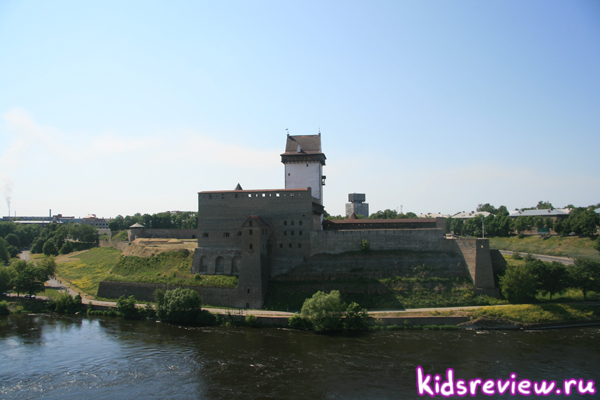
Bonuses:
If you have a Schengen visa, you can cross the border on the road bridge and take a look at the fortress of the Teuton Order (Narva) knights located on the other shore of the Narva.
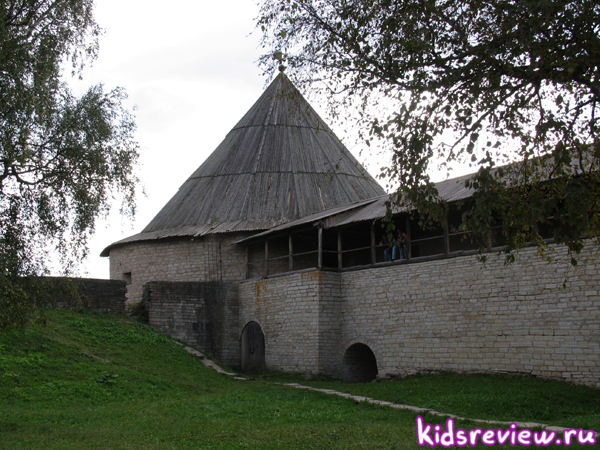
Time: 12th Century
Location: the fortress is located in Staraya Ladoga in the Volkhovsk District of the Leningrad Region 140 km from Saint Petersburg.
Some interesting facts on the fortress:
This is the oldest fortress in the Leningrad Region. The first constructions at this venue took place as early as the days of Prophetic Oleg in the 9th and 10th centuries. The city itself is even older – it was founded back in the 7th century by Slavic tribes. Now it remains a typical ancient Russian city that resembles what you might see in a movie or read in a book.
Of course there isn’t much left from the constructions of those days. The foundation for a new fortress was laid a bit later in the beginning of the 12th century. This is a medium sized fortress will walls about 8 meters tall and a width of about two meters. Situated along the fortress walls are five towers. In the fortress yard are two churches. The first is the white stone church of Georgy Pobedonosets, where you can see murals from the 12th century in good weather (during wet and rainy weather, the church is closed) and the second is the wooden church of Saint Dmitry Solunsky.
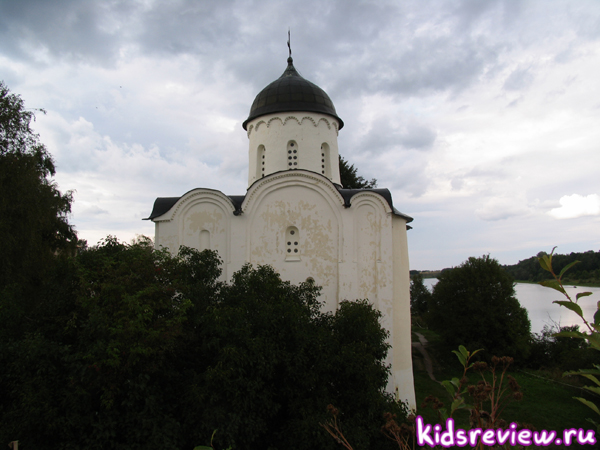
Staraya Ladoga Fortress today:
As a whole, the fortress looks well preserved, especially from the view on the highway. From time to time, they conduct restoration works there. At the south of the fortress is the Earth Settlement. These shafts and bastilles are poured aside from the fortress edifices of the 16th century.
According to the Novgorod chronicle, Staraya Ladoga is home to the grave of Prophetic Oleg, although the locals there claim it’s a myth. Presented at the museum are two expositions – one historical and the other ethnographic. Materials are demonstrated there from diggings as well as objects related to the history of the fortress.
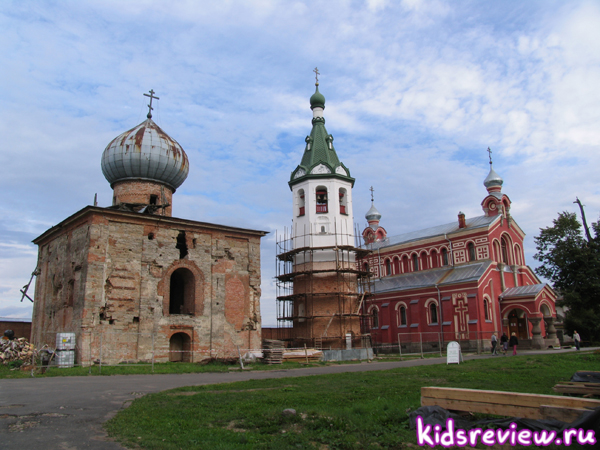
Staraya Ladoga Hours of Operation:
The fortress is open to visitors from 10 a.m. to 5 p.m. and is closed on Mondays.
Cost of Admission:
Admission is 100 rubles (as of summer 2011)
How to get to Staraya Ladoga Fortress:
By car, you can take Highway M18 coming from Saint Petersburg until the turn to Volkhov. Then continue about 9 km south on Highway A115.
.jpg)
Bonuses:
Well preserved on the territory of Staraya Ladoga are ancient burial mounds, churches, cathedrals, monasteries, and monastery constructions, some of which you can have a look at along with the fortress. On weekends and holidays, the locals there sell fresh smoked fish.
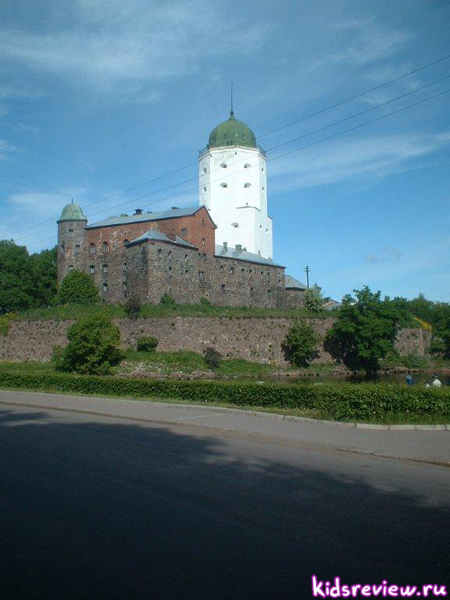
Time: 13th Century
Location: the castle is located in the city of Vyborg in the Leningrad Region 146 km from Saint Petersburg.
Some interesting facts on the castle:
Despite the fact that the edifice is technically considered a castle, it the same kind of defense fortification as the fortresses in Staraya Ladoga, Shlisselburg, and the other places previously mentioned.
The foundation of the castle was laid in the 13th century by Swedes. The castle isn’t terribly large, yet quite exquisitely complex. Using the natural features of the venue, they have surrounded the highest part of the island with a fortress wall two meters in width and in the center they erected a rectangular stone tower, which was named after Norwegian king Saint Olaf. Two drawbridges connected the castle to the city.
Vyborg Castle today:
Today the main attraction of the castle is Olaf’s tower. You can climb it using the timber scaffold located inside the tower. Above is an observation deck, which gives you a view of the whole city.
Also located in the castle are two museums – one history museum and one natural history museum. Both are quite captivating. Besides that, there is special entertainment for children at the upper yard – bows and arrows and an armor and weaponry shop.
Vyborg Castle Hours of Operation:
The castle is open to visitors from 10 a.m. to 7 p.m.
Cost of admission:
A ticket inside the Castle costs 50 rubles, to Olaf’s Tower it’s 40 rubles, and the museums cost 60 rubles (data as of summer 2011)
How to get there:
You can get there by car on Highway M10 – Scandinavia. Follow signs to Vyborg and turn on Leningrad Highway (A125).
Or take a train from Finland Train Station.
Bonuses:
You can take a walk around the old city – there is a lot of pleasant places there, you can pay a visit to Monrepo Park, and you can also stop by the central market and buy some delicious cabbage and salted pickles brought by the tourists just for Fins.
Author: Natalya Kirillova
Photos by the author and familywithkids.com
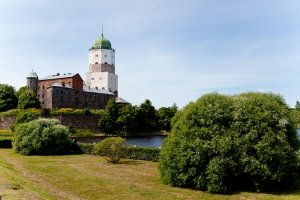





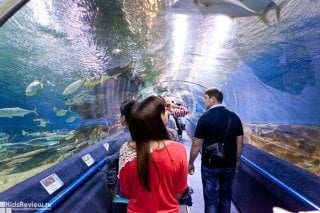
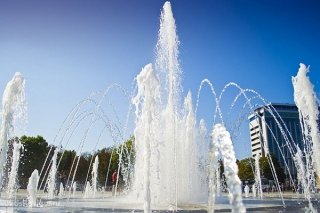
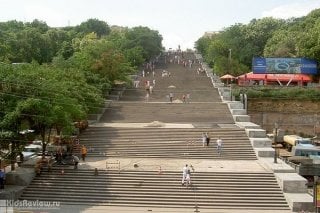
Comments and reviews (0)
Before leaving a comment please have a look at our rules.